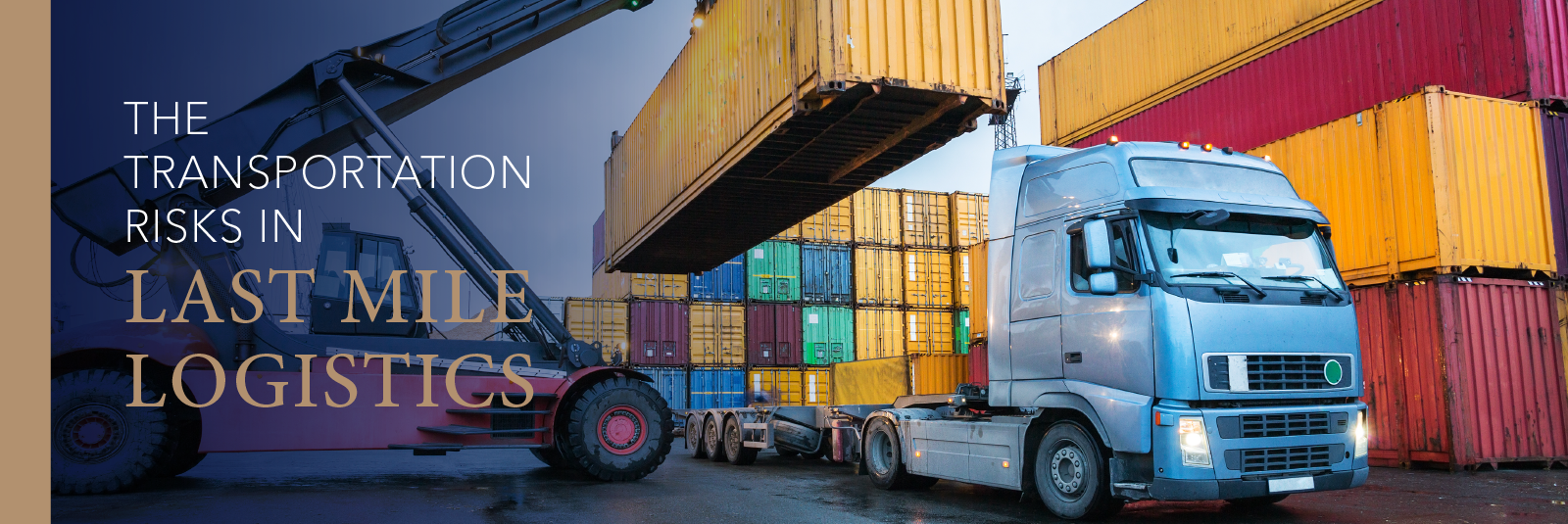The last mile is a critical part of any transportation strategy and the competition is fierce among companies providing this service. The only way to compete without opening your business up to liability is to fully understand the risks at play in last-mile logistics.
The Long Last Mile
Last-mile logistics is the final “leg” of the shipping process where products are delivered to the customer or end user. This segment isn’t actually a mile — it could be one block or 100 miles, in fact. Regardless of the distance, what’s consistent is the increasing consumer demand for quicker deliveries and better customer service. Global e-commerce sales are expected to reach $2.8 trillion in 2018, and the pressure to perfect last-mile logistics will only get more intense.
Last Mile Transportation Risks
The last mile counts for an estimated 50% of total logistics cost. That cost fuels a lot of moving parts and complexities, ultimately resulting in shipments reaching consumers’ doorsteps. The devil’s in the details and there are challenges and risks unique to last-mile transportation:
- Warehouses
Efficient last-mile logistics requires inventory to be close at hand. In other words, the current e-commerce environment demands more warehouses to be as close as possible to the densest customer concentrations. Inside the facilities, there must be clear processes to ensure speedy selection of the correct items, and proper address labeling. If warehouses are too spread out or gaps exist in internal systems to find and deploy the right products, there is significant risk to delivery timelines and customer satisfaction.
- Urban Areas
Crowded cities pose their own set of risks to effective last-mile logistics.Traffic congestion, insecure destinations where theft of the shipment is likely, and inaccessible destinations (for example, gated buildings or out-of-service elevators) all are challenges in urban environments. Shippers and 3PLs must know how to navigate these risks in order to avoid delays or losses.
- Suburban or Remote Areas
Suburban and remote areas can also be difficult to access, but for separate reasons. Greater distances from warehouses or distribution centers and hard-to-locate destinations pose a risk to disrupting last-mile logistics.
- Consumers
Consumers can negatively impact the last mile, as well. If recipients aren’t present to sign for deliveries, addresses are incorrect, or recipients experience buyer’s remorse, shipments will “reverse.” Cost accrues by sending products back through the supply chain, which opens the door to more risk of loss and liability.
Protecting Against Last-Mile Liabilities
Companies are getting better and better at last-mile logistics, using new technologies and tactics like drones, delivery lockers, sharing economy business models, image-based data capture devices, and sophisticated transportation management systems. These solutions will improve last-mile logistics and consequently reduce the inherent risks.




